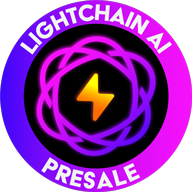Cryptocurrency Liquidity can be defined as the process by which an asset is converted into fiat currency based on demand. If you are not satisfied with this definition than liquidity can also be defined as an asset bought or sold on the open market when the price is relatively affordable.
In light of the above, discounts or even premiums cannot be attached to an asset in the process of buying or selling it. What this means is that entry and exit is possible at any point within the transaction.
The issue of liquidity is not unusual when selling an asset. There is no basis of comparison between liquid and illiquid markets. Liquid markets are deeper, meaning that traders may find it difficult to exit the market.
For instance, Bitcoin is known to have experienced exponential growth since its inception over 9 years ago. In 2009, market analysis showed that Bitcoin was just 50 units. However, the volume of Bitcoin in circulation is presently well over 13,000,000 units. Cryptocurrencies are fraught with the issue of illiquidity.
What Impacts Liquidity?
- Regulations: Government regulations have seriously affected cryptocurrency. Some countries have outlawed the use of cryptocurrency, while others have passed laws to support its usage. That’s not all: some countries are indifferent towards the usage of cryptocurrency. Government regulations across the world will continue to affect cryptocurrency liquidity.
- Exchanges: Due to the rising number of cryptocurrency exchanges, the number of people trading cryptocurrency has also increased significantly, leading to a surge in the frequency and volume of trading and allowing for increased liquidity
- Awareness: Some people do not know about cryptocurrency and how it works. However, there are still a lot of investors, buyers, and sellers that are benefiting from cryptocurrency. Lack of awareness among investors, corporations and government institutions has limited its overall acceptance.
- Acceptance: The acceptance of cryptocurrencies has largely contributed to an increase in its usage and stability. Cryptocurrencies are now being used as a means of payment accepted by online platforms and brick-and-mortar merchants. As a currency is used more and more to make payments, the currency becomes more liquid.
So How Does One Enable Liquidity?
Having identified the issue of liquidity as it relates to cryptocurrency, the next question is how to technically address this issue. Below, we will take a critical look at the solution provided by Bancor with regards to addressing this issue of liquidity facing cryptocurrencies and other currencies such as community currency and conventional tokens. Going with Bancor, liquidity can be tackled with the use of Smart Tokens.
So, how does Bancor solve the issue of liquidity with the use of Smart Tokens? Bancor gives people, companies, communities, and organizations the ability to make tokens that are autonomously convertible through the use of connectors. Connectors are essentially modules that secure the balances of other tokens as long as they are connected to the same network.
What Are Smart Tokens?
Let’s start with “What is the Bancor Protocol?”, which is regarded by Bancor as the standard which Smart Tokens operate. The following explains the Bancor Protocol.
A Smart Token is programmed with the aid of one or more connectors. These Connectors are primarily modules that secure the balances of other tokens as long as they are connected to the same network. The balances can then be used to calculate a Smart Token’s price in any connected token with the aid of the Bancor Formula. The Smart Tokens can be traded in the open market by depositing or withdrawing the amount calculated from the connector balances.
Let’s take Ethereum as an example. If a Smart Token has only one Ethereum as its connector, to buy that Smart Token, you have to send Ethereum to the contract of the Smart Token. To sell Ethereum, you have to send Smart Tokens back to the contract and then receive an amount that corresponds to the value of Ethereum.
Bancor Smart Tokens Benefits
There are several advantages of Smart Tokens over the traditional token model. These advantages include:
- Continuous Liquidity: Regardless of the trading volume, conversion of Smart Tokens into other connected tokens is possible since buying and selling are continuously carried out via the smart contract.
- No extra fees: There is no hidden or extra fee when converting Smart Tokens; the only fee one pays is the blockchain platform fee. This benefit is not possible in the traditional exchange model. The blockchain platform fee is known as gas when dealing with Ethereum.
- Foreseeable Price Changes: The calculation of prices is made possible using the Bancor Smart Token according to the size of the transactions involved. Since transactions will make the price fluctuate from connector balances, it is possible to predict the price, leading to a more stable price.
- No Spread: Unlike the traditional method of determining the price of tokens, known as an orderbook, the price of Smart Tokens is calculated using the Bancor Protocol formula.

What Are Smart Contracts?
We have been mentioning the term “Smart Contracts”. Let’s briefly explain what smart contracts are. Smart contracts are computer programs that are capable of running on the blockchain. Smart contracts are unchangeable so long as the blockchain is in operation. As they relate to Tokens, smart contracts make it possible for certain features to be programmed while some attributes are built into the token’s software directly.
Bancor leverages its ability to program Smart Tokens, thereby trading the token with other users in exchange for a connected token using the Bancor formula at an algorithmic rate. This process makes it possible for Smart Tokens to be integrated into a network system, thereby providing continuous liquidity to each token that is connected to the network, using a price that balances the trading volume in the network.
The Bancor protocol offers a solution to the problem of liquidity in cryptocurrency. This solution is made possible using a model known as asynchronous price-discovery, which leverages the Smart Token balance. This model employs a unique characteristic that enables buying and selling of Smart Tokens at any given time directly through the contract of the Smart Token. Bancor provides a website application to users instead of users having to rely on the old process of using an exchange or matching buyers and sellers to transact.
Why Exchanges Pose a Problem to Cryptocurrency Liquidity
Since price and liquidity can be obtained via a traditional exchange, aren’t you wondering if all this analysis is required in the first place? Do we even need a new solution to the problem of liquidity? It is important we carry out this analysis because traditional exchanges are mere “matchmakers” that match people with different wants.
A typical trade is made up of two opposing transactions involving one person selling what the other person needs. The reason currencies experience the problem of liquidity is that each trader tends to find another trader with opposing transactions. With this problem, it would be difficult for smaller currencies like community currency, loyalty points, and other credits to experience liquidity constantly.
Also, a lot of people like the market makers and traders, which are in one way or the other responsible for the liquidity problem, are constantly seeking ways to profit from the system.
This explains why the Bancor is making the headlines and why Smart Tokens are unique, making it possible for users to enjoy continuous liquidity with no hidden or extra fee incurred by the user. It is optional for traders or market makers to participate in the convertibility. It is pertinent to note at this juncture that Smart Tokens can also be regarded as a token that is operated by an open source smart contract.
The Bancor Protocol in Three Steps
- First and foremost, it is imperative to understand the concept of Smart Tokens. They are money that is capable of holding other forms of money, provided the money is connected in its balances (via the network). In light of this, smart contracts are available to operate the tokens. A smart contract owns a portion of one other token balance. The above explanation is what is termed the initial liquidity “plug-in” connecting the Smart Token to the network. This network Smart Token allows trading of other tokens by withdrawing or collecting from sellers or buyers, as the case may be.
- Secondly, trading of the smart tokens can be dynamic and operated by its handler (the smart contract) directly. The buying of a smart token is made possible by sending some portion of the tokens in the network to the smart contract. These tokens will then be added to the balance of the connector, making it possible for a new Smart Token to be created and sent to buyers.
What this means is that the supply of a Smart Token is constantly growing as its demand increases. This will also lead to a corresponding increase in its price. Generally, an increase in supply does not necessarily mean a state of inflation for those who hold the Smart Token, since demand controls the price and it is not affected by a fixed supply. On that same note, when smart tokens are sold, what happens is that the smart token will be sent to its smart contract, which then withdraws the connected token from the connector balance and then returns them to whoever is selling the smart contract.
At this point, the smart contract that has been sold will then be removed from circulation and permanently destroyed. The price will be on a steady decrease thanks to the Bancor formula which makes it possible for the decreased connector balance to be captured. This analysis can be compared to when tokens are using via the initial coin offering with a view to exchanging it with other tokens like Ether.
- The third part is a realization that Smart Tokens are capable of calculating their own prices using other tokens that are connected to a shared network. This is made possible using the Bancor Formula, which holds the ratio between Smart Token market cap and the connector balances constant. As trading occurs, there is a sharp addition and subtraction in the tokens, thereby causing the price to fluctuate and making the ratio constant.
The constant nature of the ratio is also known as “weight”, which is also referred to as the Smart Token’s creator. The whole process ensures that buying and selling are at equilibrium since the price is high when the token is bought and the price also drops when it is sold. Just like the principle of supply and demand in economics, price is calculated as a mathematical function (Smart Token and connector balances) since price can adapt with the demanded smart tokens.

Bancor Token Generation Explained
Within three hours, the project of liquidity network blockchain netted about $153 million in Ether. This amount made the project one of the most successful token launches in 2017, as reported in this Forbes article about Bancor. At the event of the token generation, there were over 390,000 Ether generated, making it a world record at the time. The event took place on the 12th of June, 2017.
According to Bancor Network Token (BNT), smart tokens will be added with new features in the next 2 years. These features include security upgrades like account recovery, purchasing smart tokens with a credit card, empowering communities to easily use the token without necessarily having the technical know-how, moving the liquidity network completely to a blockchain, and making it possible to decentralize the system. Also, in the next 2 years, there will be a launch of Bancor grants which empower any community to be connected to the Bancor network through the Smart Token connector balance.
Since the launch of the Smart Token, Bancor has made it possible for its token to be activated and it has launched its relay token for over 20 ERC tokens, which are currently convertible through the network. Bancor has also launched their web app on both mobile and desktop platform while deploying a unique widget that will enable users to comfortably convert their tokens irrespective of their location.
Bancor Network Token holds Ether as its primary token connected to its network, hence making it possible for the conversion of tokens to Ether, so long as the token is connected to the Bancor Network There won’t be any need to match buyers and sellers. As it stands now, this feat is a great achievement in the world of blockchain. Bancor is single-handedly driving a technology that will provide a solution to the problem of liquidity while creating cryptocurrencies that are intrinsically liquid.
Summing it All Up
Bancor has successfully discovered a new model – without relying on the traditional method of buying and selling tokens, Bancor is reinventing liquidity. This method is made possible through the use of smart contracts that are currently available on the Ethereum network. This model allows balancing at all times other connected tokens. The Bancor model makes use of a simple formula to calculate and recalculate the price of Smart Tokens that is convertible at any point on the network for any of its connected tokens.
The Bancor model replaces the traditional method of determining price. Previously this required a highly labor-intensive process involving “matchmaking” before a trade could be carried out. The model offers a lot of functions such as decentralization, improvement in efficiency, transparency, stability for the emerging cryptocurrency, and accessibility in a dynamic economy.
Do you think that Bancor is the solution to the challenge of liquidity in the cryptocurrency marketplace? Let us know what you think in the comments below.
Images courtesy of AdobeStock, Pixabay, Bancor



























